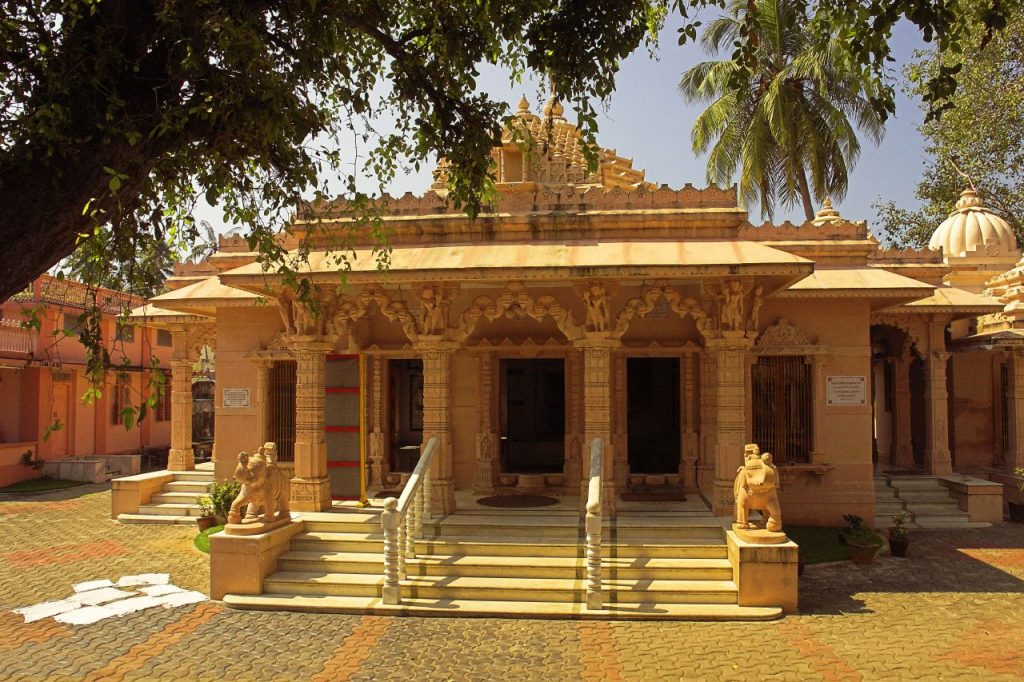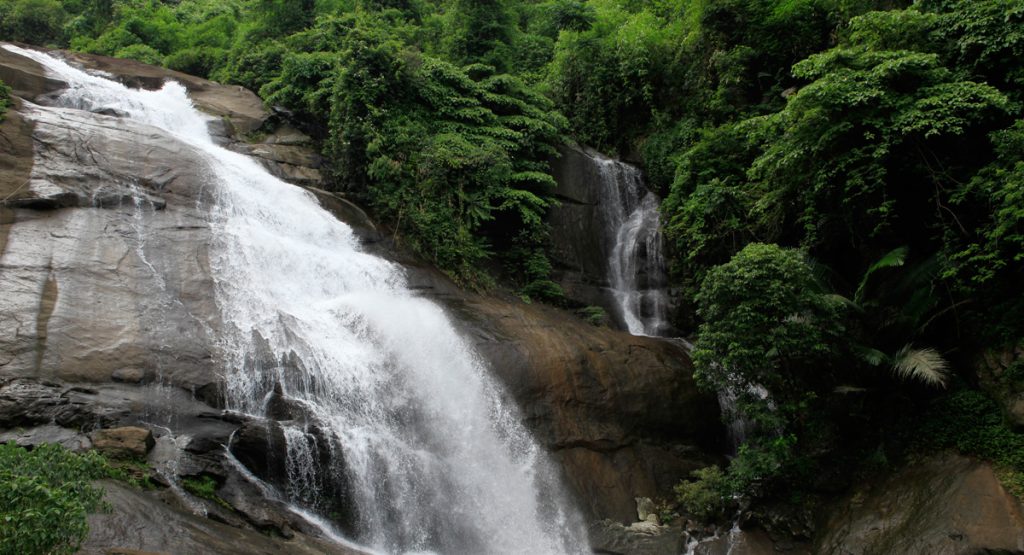Rayiranellur Mala also known as Rayiranellur Hills or Rayiranellur Mountain, nestled in the near Pattambi, Palakkad district of Kerala, India, is a captivating mountain range revered for its natural splendor and cultural significance. Enveloped by lush greenery, this picturesque landscape offers breathtaking vistas and a serene atmosphere that captivates visitors.
The mountain holds a special place in local folklore and tradition, with myths and legends intertwined with its rocky slopes and verdant valleys. Its cultural significance is evident in the religious practices and festivals celebrated by the surrounding communities, adding to the mystique and charm of the region.
Rayiranellur Mala is not just a geographical landmark but also a sanctuary for diverse flora and fauna, contributing to the ecological balance of the area. Its rich biodiversity makes it a haven for nature enthusiasts and researchers alike, with numerous species of plants and animals calling it home.
In addition to its natural beauty and ecological importance, Rayiranellur Mala offers a range of recreational activities for visitors, including trekking, hiking, and nature walks. Tourists flock to the area to explore its trails, discover hidden waterfalls, and immerse themselves in the tranquility of the mountainous terrain.
Moreover, Rayiranellur Mala plays a crucial role in the local economy, providing livelihoods for communities through tourism, agriculture, and other sustainable practices. The mountain serves as a beacon of heritage and identity for the people of Kerala, reflecting their deep-rooted connection to the land and its resources.
Overall, Rayiranellur Mala stands as a symbol of natural beauty, cultural heritage, and ecological importance, inviting travelers to experience its wonders and unravel the mysteries that lie within its embrace.
Naranath Bhranthan with Rayiranellur Mala
Naranath Bhranthan, a legendary figure in Kerala folklore, is often associated with Rayiranellur Mala, adding a touch of whimsy and intrigue to the mountain’s mystique.
Legend has it that Naranath Bhranthan was one among the 12 offspring of Vararuchi, the astrologer in the court of King Vikramaditya. Naranath Bhranthan would roll huge boulders to the crest of the hill only to push them down the other side and then clap in joyous abandon. One day, Goddess Durga appeared before him and blessed him. The incident is believed to have happened on the first day of the Malayalam month of Thulam [October-November]. And till date, people climb the hill during this day, as a mark of respect to the legendary figure.
According to local tales, Naranath Bhranthan, whose name translates to “Madman of Naranam,” was a wise yet eccentric sage known for his unconventional behavior and eccentric antics. Legend has it that he roamed the countryside, clad in tattered robes and adorned with wildflowers, engaging in philosophical discourse with both mortals and celestial beings.
One popular story recounts how Naranath Bhranthan, in a fit of madness or divine inspiration, decided to carry a colossal rock on his head, intending to place it atop Rayiranellur Mala. Despite the incredulity of onlookers, he persisted in his quest, traversing rugged terrain and dense forests with unwavering determination.
As Naranath Bhranthan made his ascent up the slopes of Rayiranellur Mala, he became a symbol of both folly and enlightenment, challenging conventional notions of sanity and wisdom. His eccentric journey, steeped in allegory and symbolism, captivated the imaginations of generations, becoming an enduring tale of human folly and divine intervention.
Today, the legend of Naranath Bhranthan serves as a whimsical reminder of the enigmatic allure of Rayiranellur Mala, inviting travelers and pilgrims to ponder the mysteries of the mountain and the wisdom hidden within its rugged peaks and verdant valleys.
History
The history of Rayiranellur Mala is deeply intertwined with the cultural and social fabric of Kerala. While specific historical records might be scarce, the mountain holds significance in local folklore, traditions, and religious practices, offering insights into its historical importance.
One aspect of Rayiranellur Mala’s history lies in its association with ancient civilizations and indigenous communities that inhabited the region. Archaeological findings and historical research suggest that the area surrounding the mountain might have been inhabited by early human settlements, contributing to its cultural legacy.
Throughout the centuries, Rayiranellur Mala has been a witness to the ebb and flow of dynasties, kingdoms, and colonial powers that ruled over Kerala. Its strategic location and natural resources likely attracted the attention of various rulers who sought to control the region for trade, defense, or religious purposes.
Moreover, Rayiranellur Mala’s proximity to important trade routes and cultural centers might have played a role in shaping its historical significance. The mountain could have served as a waypoint for traders, travelers, and pilgrims, facilitating cultural exchange and religious pilgrimage over the centuries.
Religious and spiritual practices have also left their mark on the history of Rayiranellur Mala. Temples, shrines, and sacred sites dot the landscape, indicating the mountain’s importance as a place of worship and pilgrimage for devotees of different faiths.
Furthermore, Rayiranellur Mala’s history is intertwined with the struggles and triumphs of local communities who have relied on its resources for sustenance and livelihoods. Traditional practices such as agriculture, animal husbandry, and artisanal crafts have sustained generations of families living in the vicinity of the mountain.
In recent times, efforts to preserve and protect Rayiranellur Mala’s natural beauty and cultural heritage have gained momentum, reflecting a growing awareness of the mountain’s historical significance and ecological importance.
While the precise historical narrative of Rayiranellur Mala might be elusive, its rich tapestry of legends, traditions, and cultural practices continues to shape the identity of Kerala and inspire reverence for this ancient mountain.
Ecological Important of Rayiranellur Mala
The ecological importance of Rayiranellur Mala cannot be overstated, as it serves as a vital ecosystem supporting diverse flora and fauna within the region. Here are several key aspects highlighting its ecological significance:
Biodiversity Hotspot: Rayiranellur Mala is home to a rich variety of plant and animal species, many of which are endemic to the Western Ghats region. The mountain’s diverse habitats, including tropical forests, grasslands, and wetlands, provide a haven for numerous species to thrive.
Conservation of Endangered Species: Within its lush forests and rugged terrain, Rayiranellur Mala harbors several endangered and threatened species, including endemic plants, birds, mammals, and amphibians. Conservation efforts in the area are crucial for protecting these vulnerable species from habitat loss and fragmentation.
Water Catchment Area: The mountain acts as a natural water catchment area, with numerous streams, rivers, and waterfalls originating from its slopes. These water bodies not only provide freshwater for local communities but also support aquatic biodiversity downstream.
Carbon Sequestration: The dense vegetation of Rayiranellur Mala plays a vital role in carbon sequestration, helping to mitigate climate change by absorbing carbon dioxide from the atmosphere and storing it in plant biomass and soil.
Soil Conservation: The extensive root systems of trees and plants on the mountain help to prevent soil erosion and landslides, maintaining soil fertility and stability in the region. This is particularly important in hilly terrains prone to erosion.
Habitat Connectivity: Rayiranellur Mala serves as a crucial link in the network of protected areas and forest corridors across the Western Ghats, facilitating the movement of wildlife between fragmented habitats and promoting genetic diversity among populations.
Ecotourism and Sustainable Development: The ecological richness of Rayiranellur Mala attracts nature enthusiasts and ecotourists, providing opportunities for sustainable economic development in the region. Well-managed tourism initiatives can generate income for local communities while promoting conservation and environmental awareness.
Traditional Knowledge and Practices: Indigenous communities living in and around Rayiranellur Mala often possess valuable traditional knowledge about the local ecosystem and its resources. Preserving and incorporating this knowledge into conservation strategies can enhance the sustainable management of the mountain’s ecology.
In conclusion, Rayiranellur Mala’s ecological importance extends far beyond its scenic beauty, playing a vital role in biodiversity conservation, watershed management, climate regulation, and sustainable development in the Western Ghats region. Protecting and preserving this natural treasure is essential for the well-being of both local communities and the wider ecosystem.



